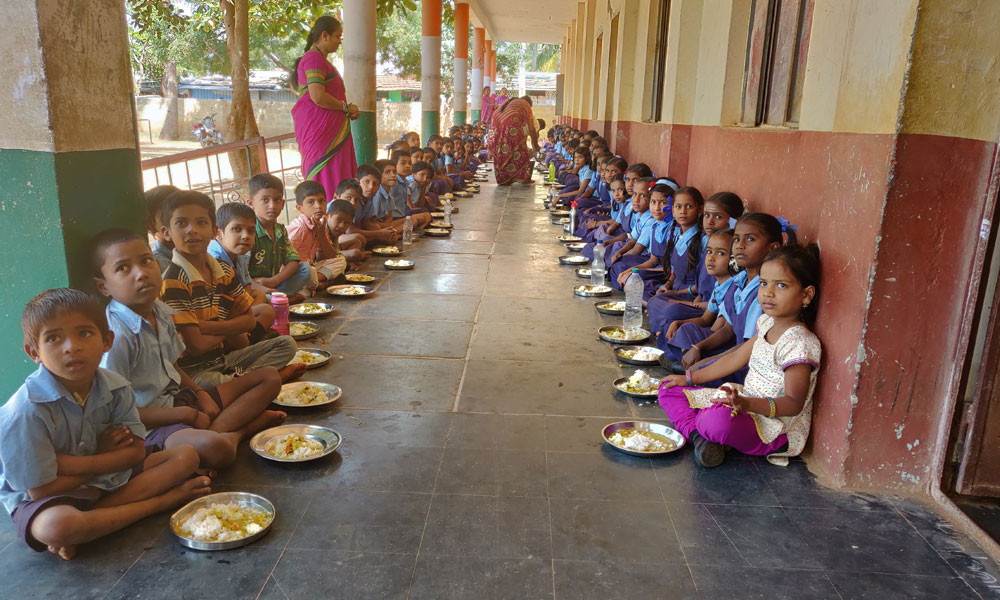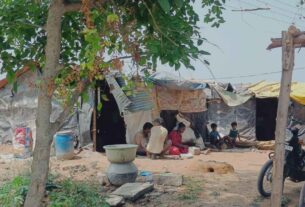Poor infrastructure in Government School in Hoovina Hadagali leads to children dropping out.
Hoovina Hadagali, Oct. 21, 2018
The Government High Primary School (GHPS) in MP Prakash Nagar in Hoovina Hadagali is one of the few schools present in the taluk Hoovina Hadagali. The school is a primary school with Classes 1st to 8th grade. The student population is of 120, out of which 88 are girls and the rest are boys.
The school has five-six classrooms with five teachers, where the students are taught Kannada, English, maths, and science. The school lacks basic facilities like playground, art rooms, and supplies. The students are not encouraged to learn dancing or singing. There are no extra-curricular activities for the students to indulge in.
The school also lacks a computer lab, a science lab, and other maths and science models and equipment.
The students are provided with a mid-day meal, consisting of rice and sambhar/dal. The teachers come from nearby towns to teach in the school. The school principal informed The Softcopy newspaper that the recruitment does not takes place in Hadagali.
There’s a nearby hostel, KKGBV, which is established to help girls from different taluks and villages to stay and study in Hoovina Hadagali. The boys are not provided with any such facility; hence many parents don’t send even their boy child to school – since the school is far from residential areas. This explains the low population of boys.
In addition, after the 7th grade, the students have no other option but to drop out of school.
There are only 13 high schools (public and private) in the taluk, most of the children drop out of school after completing their 7th or 8th grade and join the labour force. They get pushed into child labour because of the lack of school infrastructure in the taluk.
The taluk is backward in educational facilities and the literacy rate is low there with just 58.5 percent. S. Mehboob, senior reporter of Hadagali said, “All the private schools in the area are expensive, and the villagers can’t afford to send their children to such schools. Hence people resort to sending their children to government schools, which are located near their houses.”





